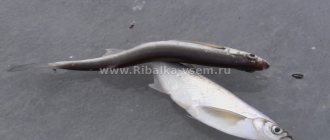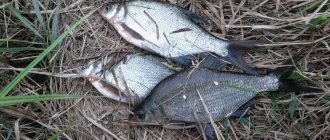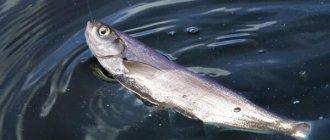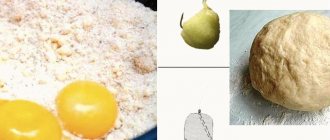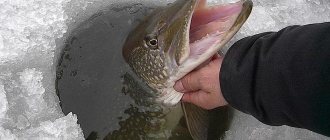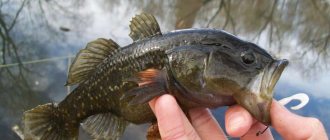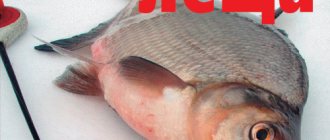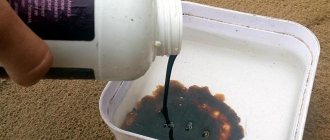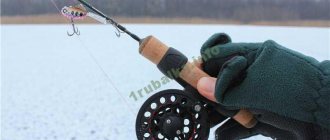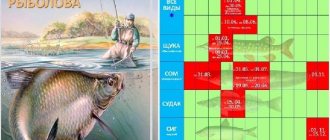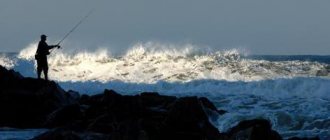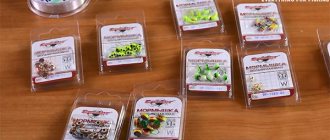Features of payers
What attracts fishermen to paid reservoirs?
- Firstly, you can always buy ready-made bait mixtures and baits on paid markets. This allows the fisherman to save time and not have to search for the right bait in stores.
- Secondly, owners or tenants of paid sites monitor the cleanliness near the reservoir. It’s rare to see a paid lake with plastic bottles scattered on the shore. This adds a certain comfort.
- Thirdly, fishermen who do not have a means of transportation on the water can rent a vessel on a paid site for a certain fee.
Obviously, the advantages are not bad, but there is another side to the coin. The disadvantages include that many payers, in order to avoid a powerful bite when visiting fishermen, reset the water level. This phenomenon affects the bite. The fish practically ceases to be interested in baits and, in the best cases, the fisherman leaves the reservoir with one or two “tails” whose weight does not exceed 1 kg. In this way, the tenant justifies his costs for the caught fish.
Preparing for carp fishing on pay sites
Arriving at one of the nearest paid reservoirs (by the way, I paid 350 rubles for travel to the territory of the reservoir), the following surprised me. For some reason, half of the lake was overgrown with grass, water lilies and other aquatic vegetation. This factor could not help but disappoint me. It was good that I took the boat with me, since the cleared “windows” for fishing were all occupied.
While he was unpacking, one of the anglers decided to finish his carp hunt and freed up a good spot. According to its results, the bite is completely absent. Since yesterday evening, he managed to catch a dozen sorog and one three-hundred-gram crucian carp. With carp, things were even worse. On the entire lake, out of 15-17 anglers, there were four bites of small individuals.
I unpack the gear, pre-prepared groundbait, bait, set up a camp chair next to the water’s edge and begin the starting feeding. I use standard bait, purchased at a fishing store specifically for carp fishing. For a more attractive mass, I add some attractants, red maggots and two cloves of chopped garlic. The bait is standard: corn, maggot and red worm. If there are no bites for a long time, then baits can be combined.
I use feeder rods with a weight of up to 60 grams. Braided fishing line 0.24 mm, hooks No. 8, feeder weighing 40 grams. During further fishing, the feeder can be replaced with a smaller one if the fish responds well to the bait. If the bite is bad, it is important to supplement the fish in the required proportions, but you should not overfeed it either.
I send several large balls into the water at a distance of 12-13 meters. I put the rods on the stand and make the first casts. I use a leash 15 cm long. I attach small foam balls to a hook with an attachment. I do this because in this reservoir, the bottom is silted and the bait gets buried. It is more difficult for carp to find the bait, and when using polystyrene foam it remains above the mud. This makes it more likely that the fish will discover your bait rather than ignore it.
Lure
You can use different types of bait for fishing. It should be quite abundant and plays a role not so much in attracting fish to the point, but so that the carp, passing by, lingers and has the opportunity to swallow the bait. It is not the habit of this fish to stand still for a long time to find food, especially in a large school. Therefore, it is worth distinguishing two types of bait - for the starting feeding, to create a feeding spot, and for the feeder, to create a small point with a source of smell. For the method, these two compositions also differ in consistency - for the starter feed it is looser, for the feeder it is more viscous. You can use both purchased and home-made bait compositions.
In general, carp respond very well to both smell and tactile impulses. This is evidenced by his antennae, which help him search for food in nature. Therefore, we must try to add not only odorous components, but also animals that will create vibrations that attract fish and move on the bottom. Bloodworms, maggots and worms are used as animal components. Worms, according to the author of the article, will be much better than all others. They live longer under water than maggots, and are distinguishable by fish from a greater distance than bloodworms. They are easier to get. For large carp, they are more attractive than a whole spot of food bloodworms, since they themselves are larger. There is no need to chop them into bait, but you should put them there whole and then mix them so that they move on the bottom.
Due to this specificity, it is advisable to use worms only for starting feeding using a carp rocket, since putting several whole worms into a small feeder or method feeder will be a problem. However, you can use bloodworms and maggots as animal components for them separately from the starter feed.
Waiting for a bite
Fishing for carp on paid sites can take place throughout the day. Sometimes fish bites occur at night. As a rule, at dusk, specimens are found of trophy size. In this reservoir, according to eyewitnesses, the average size of individuals reaches 2 - 2.5 kg, in rare cases it is possible to catch carp weighing 4 - 5 kg.
More than an hour passed before the gear was set out and thrown into the water. The first bite happened hesitantly, for a long time someone under water did not dare to swallow the bait until I made a confident hook. Something pulled the tackle to the side, but judging by the behavior, it was definitely not a carp. This is true! There was a large sorog on the hook, about 300 grams. She was attracted by the bait and was tempted by the red maggot. After more than an hour, I finally managed to catch my first fish.
I put a few maggots and a grain of corn on the hook. I use corn from Bonduelle. The core of the bait is rigid and does not slip off the hook; it is just right for fishing, which is why I use this company. I make a long cast of the tackle and wait again. About 30 minutes later, another bite occurs. The float is squeezed to the surface, and then it lies on its side. I make a confident hook and the fish, feeling resistance, makes a jerk to the side. This time, a larger specimen than the previous one became interested in the nozzle. You have to make several sharp reels with the reel so that the fish does not take the tackle into the grass.
The deceptive move of the trophy near the shore in an attempt to go to depth jams the clutch on the reels. I pick up the landing net and the trophy ends up on the shore. Unfortunately, it was not a carp, although in terms of resistance it was very similar to this particular fish. We caught a crucian carp whose weight clearly exceeded a kilogram. Well, that's already something! While I was struggling to catch the crucian carp, some of the fishermen were watching the event taking place, in the hope that I had a carp on my hook and that there was a chance that the fish would come to them, since it came to me.
Fishing for trout on paid reservoirs in winter
You can catch trout with a winter fishing rod as soon as there is strong ice on the reservoir. Fishing is carried out from early morning until late evening. However, it is worth considering that in the morning the fish are usually in one place, but after 10.00 o’clock they begin to gradually move around the entire perimeter of the pond.
Advantages of paid reservoirs
In paid reservoirs this fish can reach quite large sizes. So, its length can reach up to 70 centimeters, and its weight can reach one and a half to two kilograms. Of course, in general, the trout caught by fishermen is small - weighing approximately 0.5-1 kilograms. However, some particularly lucky fishermen can boast that they have pulled out an individual weighing 4-6 kilograms using “pay boats”.
Usually, the administration of paid reservoirs stocks the ponds with rainbow trout imported from the American continent. In America, trout fishing on paid platforms has been popular for several decades, but in our country these services began to be provided relatively recently. Fortunately, paid reservoirs (usually ponds with an average area of 2-3 hectares) where you can fish for trout are now located near almost all major cities, so choosing a place for fishing will not be difficult.
Here you can rent comfortable houses and gazebos, which is very important in winter. Also, many “pay zones” have cafes and smokehouses where you can immediately cook your catch. Anglers can rent gear.
In addition, usually paid reservoirs are stocked not only with trout, but also with other types of fish that are no less interesting and have excellent taste: sturgeon, sterlet, burbot, perch, and so on. If you are unlucky with trout, you will definitely be lucky with other fish.
Tips on how to organize trout fishing on a paid site
- When choosing a body of water, consider how often it is stocked with trout. The fish, introduced a couple of years ago, have already fallen in love with certain areas of the pond. And here she will live throughout her life, leaving her favorite place only in case of serious danger
- When fishing, try not to make noise, do not shout, and behave extremely carefully on the ice;
- Trout recently released into a paid reservoir usually does not stand still, but constantly moves around the entire perimeter of the reservoir. Therefore, it is important to catch it “intercepting”. In order for this to work, it is better to find out in detail about the topography of the bottom of the reservoir. Usually this fish moves along the edges.
- Ask for advice from the payer administration. Usually the huntsman or the guard of a paid pond is always aware of the best places for fishing.
- You can also ask advice from regulars - experienced fishermen. As a rule, those hunting for this fish gather in groups at the most promising places in the reservoir. Feel free to join such fishing groups.
- Determine the best place by the presence of old holes. If you have caught trout here before, there is a very high probability of catching it here again. Most likely, there is an edge in this place.
- Pay attention to the depth of trout fishing. It is not always the same: fish can lurk at the bottom and then suddenly rise to the top to look for food. So if the bite stops, first of all try to change the fishing depth, and if this does not give results, then move to a new place.
Carp bite
We spent more than 5 hours on the pond, and several sorogs and crucian carp swam in the cage. So far there have been no visible carp exits. Fishing for carp on paid sites does not yet guarantee that you will be able to go home with the caught trophy. You have to work hard to catch, not just 5-6 specimens, but at least one.
As evening approached, the thought more and more often arose in my head - to pack up my gear and go home. Apparently, something bothered the carp that day or didn’t like it, because it flatly refused to feed. But as a form of gratitude, the carp approached the fishing point and was tempted by sweet corn.
The bite was confident, which surprised me. The fish, having discovered the bait, immediately swallowed it. The reel clutch cracked. In a matter of seconds, 15 meters of braided line disappeared under water. I hold the rod tight, adjusting it with the friction clutch so as not to give the fish any slack. The carp swayed from side to side, trying to take the tackle into the dense aquatic vegetation. I tried to do everything right so that the fish wouldn’t get lost, because there might not be a second chance to catch a carp today. The fight dragged on for more than 10 minutes. Despite the power of the carp, the fish began to gradually get tired and lose ground. When there were 2 - 3 meters left before landing the trophy on the shore, I picked up the landing net and slowly brought it under the carp. The fish, like a trained animal, obediently entered it. Eat! Finally the first carp!
